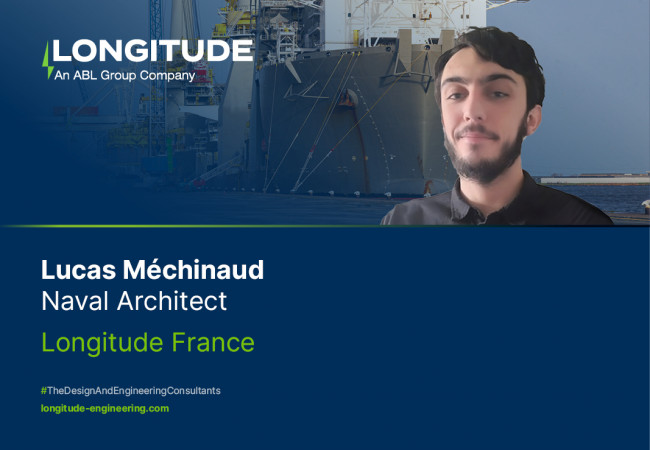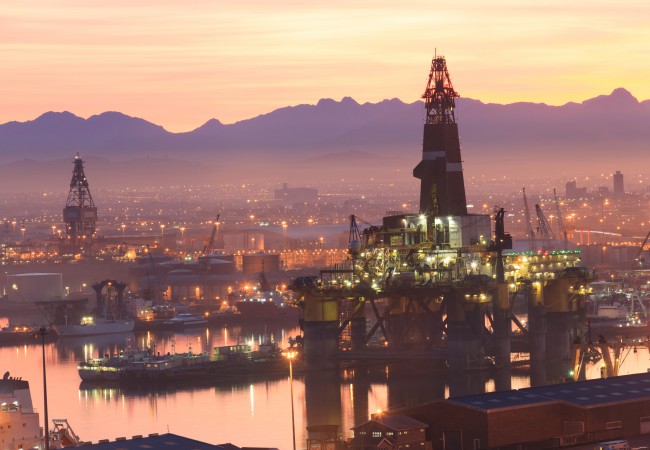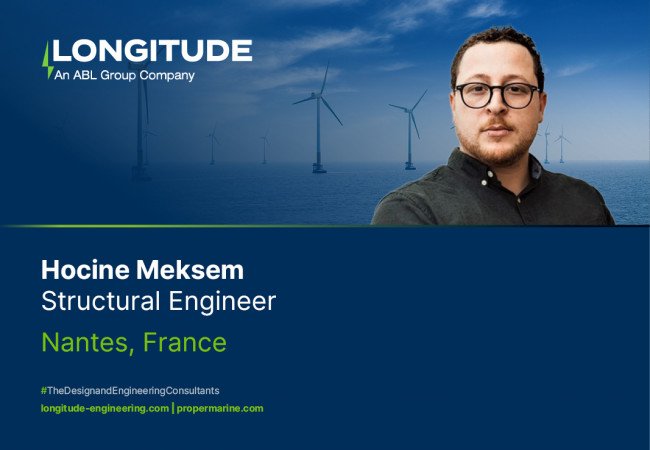The team at ABL Group shares the passion, vision and values for working in energy and the world’s oceans, de-risking and driving the energy transition. We are driven by the idea that the best work is born from professionalism, diligence… and fun. You know ABL Group, but do you know our team?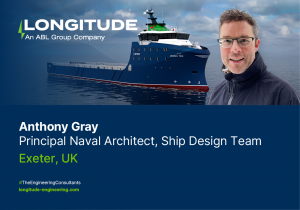
- Role: Principal Naval Architect, Ship Design Team
- Location: Exeter, UK
- Describe Your Role in Three Words: Commercial Ship Design
- Hobbies: Sailing, Whitewater Kayaking, Surfing, Swimming, Hiking
Anthony Gray | Principal Naval Architect, Longitude UK
Can you tell us a bit about your day-to-day responsibilities?
Managing and contributing towards ship design projects. I am a Naval Architect by trade, and I love to get into the technical aspects of the designs, as well as working with the wider Longitude Ship Design team to produce efficient and effective designs.
Are there any exciting projects that you’re working on at the moment?
I’m currently working on Longitude’s latest Platform Supply Vessel (PSV) design, the G-Flex. This vessel represents the next evolution of the well-established OSD-IMT G-Class, originally developed for Swire Pacific Offshore. Having played a key role in the design and development of both the G-Class and L-Class vessels, I’m pleased to be contributing to this new iteration.
My work has focused on refining the vessel’s design definition, including developing the General Arrangement and Technical Specification. Additionally, I have been supporting my colleagues in critical areas such as stability and structural assessment to ensure the vessel meets the highest performance and safety standards. The G-Flex builds upon the strengths of its predecessors while integrating advancements in efficiency, sustainability, and adaptability to evolving offshore market demands.
Where do you see the future of vessel design heading in the next 10 years?
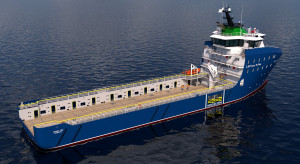 Over the next decade I believe ship design will be driven by sustainability, digitalisation, and efficiency – with all three inter-connected. The industry is moving toward greener, smarter, and more automated vessels, with a strong focus on compliance with evolving environmental regulations. Also, in oil and gas we see an encouraging trend in the Offshore Support Vessels sector, due to strong oil prices and an aging fleet.
Over the next decade I believe ship design will be driven by sustainability, digitalisation, and efficiency – with all three inter-connected. The industry is moving toward greener, smarter, and more automated vessels, with a strong focus on compliance with evolving environmental regulations. Also, in oil and gas we see an encouraging trend in the Offshore Support Vessels sector, due to strong oil prices and an aging fleet.
How do you balance sustainability with performance in vessel design?
Balancing sustainability with performance in vessel design requires a multi-faceted approach that integrates technology, operational practices, and design innovation. Improving performance often comes with added costs, but advancements in technology have made it possible to achieve both sustainability and high performance in a more cost-effective manner.
For PSVs, which operate in demanding offshore environments, efficiency and sustainability are paramount. By employing computational fluid dynamics (CFD) tools for hull form, appendage, and propeller optimisation, designers can refine the vessel’s performance while also reducing fuel consumption and emissions. These optimisations not only improve operational efficiency but also reduce the need for costly physical model testing, which cuts down on both time and expenditure.
The G-Flex’s hybrid diesel-electric propulsion system is a prime example of how sustainable systems can be integrated into vessel design. The use of energy storage systems like batteries enables load levelling for the main engines, leading to more efficient operations, especially in dynamic positioning (DP) scenarios. The inclusion of heat recovery systems to harness waste engine heat further improves energy efficiency, lowering overall fuel consumption and reducing environmental impact.
Using selective catalytic reactors (SCR) to minimise exhaust emissions and configuring engines to run on dual fuels (MGO/Methanol) are smart choices that not only meet environmental standards but also provide operational flexibility in an evolving energy landscape. The ability to use sustainable fuels gives the vessel flexibility to adapt to future fuel transitions without requiring a complete overhaul.
Another key area of innovation is reducing underwater noise pollution, which is a significant environmental concern. By increasing overall vessel efficiency and reducing the load on the propellers, you can effectively reduce underwater radiated noise (URN), minimizing the impact on marine life.
Finally, incorporating real-time monitoring systems allows operators to make data-driven decisions for maintenance and performance improvements. An integrated control system helps track the vessel’s performance and conditions, ensuring that the vessel operates optimally while minimising downtime and wear on components.
Overall, the challenge lies in continuously advancing these technologies while balancing cost-effectiveness. However, the long-term benefits: reduced operational costs, reduced environmental impact, and improved performance, make it clear that the focus on sustainability is increasingly becoming a central element of modern vessel design.
What has been your favourite ABL Group social event or team-building activity and how has it contributed to the collaborative culture at Longitude?
My favourite ABL Group social event was the Winter Team Building Experience in Bristol. It was a great mix of fun and teamwork, giving us a chance to step away from work and connect in a different way. The activities helped bring people together, and it was nice to see everyone working as a team in a more relaxed setting.
Discover more about the IMT-Isca G-Flex:

